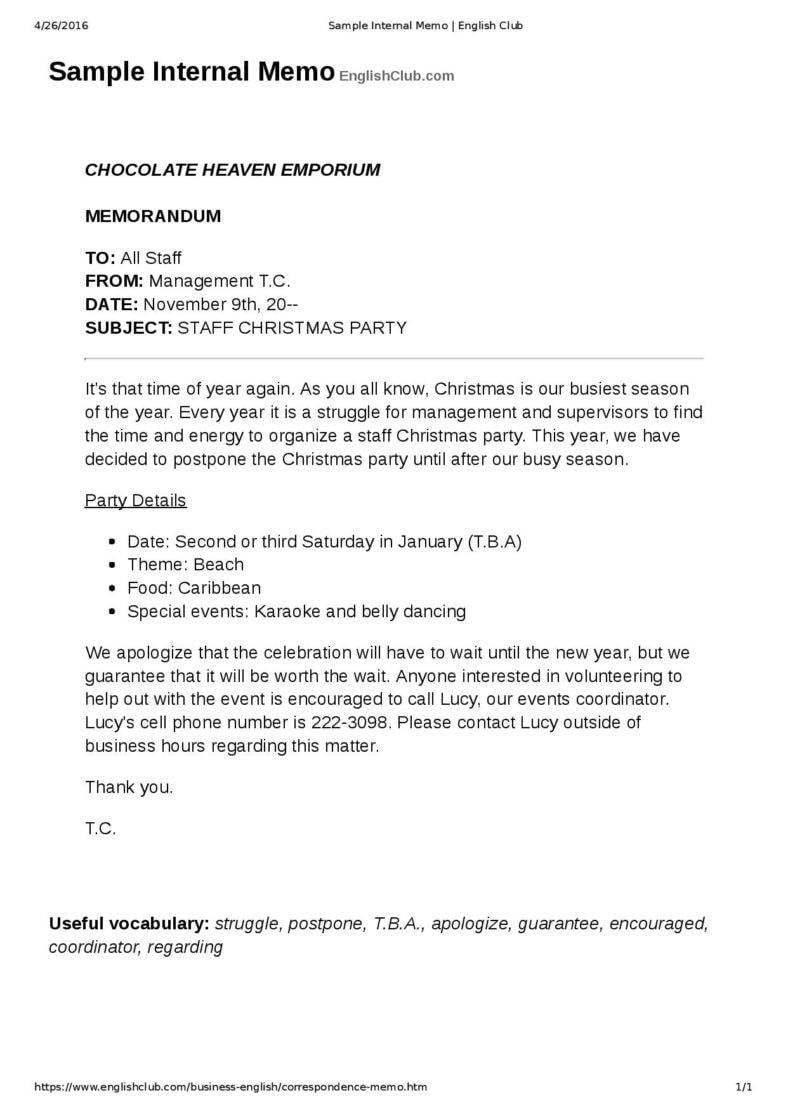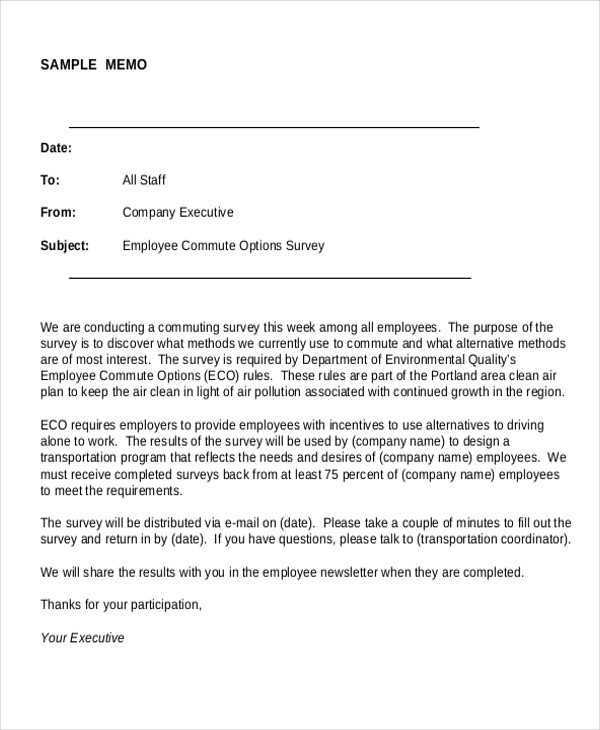
Establishing a connection with the reader can help differentiate you from other candidates. Explain how your personal and career goals align with the company's objectives and culture to explain why you are a good fit. Express enthusiasm and alignmentĭemonstrate your passion for the organisation and its mission, vision or values by elaborating on why you are particularly keen on the position or department.
#MEMO EXAMPLE HOW TO#
Related: How To Acquire New Skills (With Examples of Skills To Learn) 5. Focus on your relevant qualifications and ensure your examples align with the organisation's operations. Use quantifiable results or accomplishments whenever possible, as these provide strong evidence of your capabilities. Demonstrate how you have applied your skills in past roles and how they may benefit the organisation. In the body of the letter present your relevant skills, experiences and accomplishments by providing specific examples. Also, mention how you discovered the opportunity, such as through a referral or a networking event. Introduce yourself by mentioning your current role or area of expertise and state the specific position or department that interests you.

Use the opening paragraph to immediately capture the reader's attention and clarify the purpose of your letter. Related: Business Letter Format And Example 3. The recipient's name, title and contact information Your name and contact information at the top of the page Use a standard business letter format that includes the following:
#MEMO EXAMPLE PROFESSIONAL#
Format the letter professionallyĪ professional letter can make a strong initial impact on a reader. This can help you customise your letter to the specific needs and requirements of the organisation. Browse through the company's social media accounts and read news articles about it to understand its accomplishments and the challenges it faces. Visit the organisation's website, read about its mission, vision and values and familiarise yourself with its products or services. Research the organisation or positionīefore writing your LOI, conduct thorough research on the organisation or position that interests you.


Related: What Are Some Examples Of Different Types Of Letters? How To Write An LOI?Ĭonsider the following steps on how to write an LOI: 1. This letter helps you establish a connection with the company and increases the possibility of future conversations or opportunities. It serves as an introduction that highlights your skills, qualifications and reasons for seeking a job or partnership. What Is A Letter Of Interest?Ī letter of interest, expression of interest or enquiry letter, is a document that expresses your interest in a specific job, company or opportunity that may not currently have an advertised opening. Please note that none of the companies, institutions or organisations mentioned in this article are associated with Indeed. In this article, we explain 'What an LOI is?', list steps and tips for writing one, discuss the differences between an LOI and a cover letter and provide an example letter. An effective LOI can help you attract employers and prompt hiring managers to consider you for future opportunities. It also demonstrates your genuine interest in working for a specific company or in a particular role. A letter of interest (LOI) is a valuable tool that showcases your skills and experience to potential employers before they advertise job openings.


 0 kommentar(er)
0 kommentar(er)
